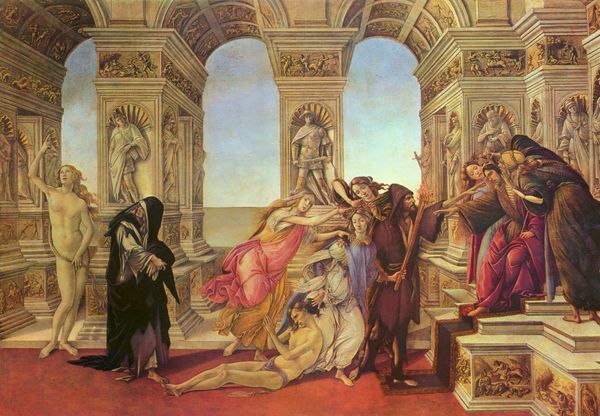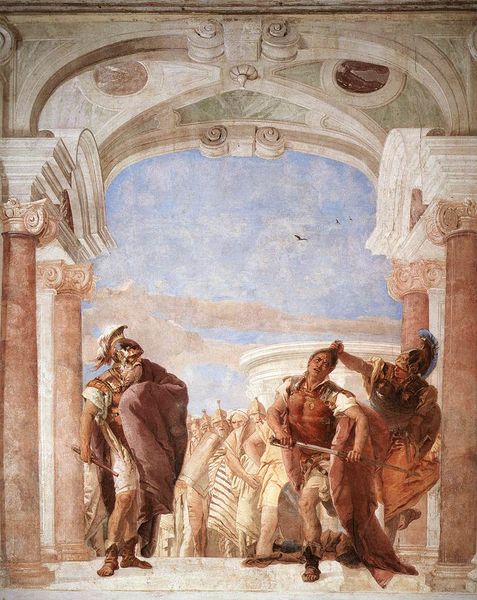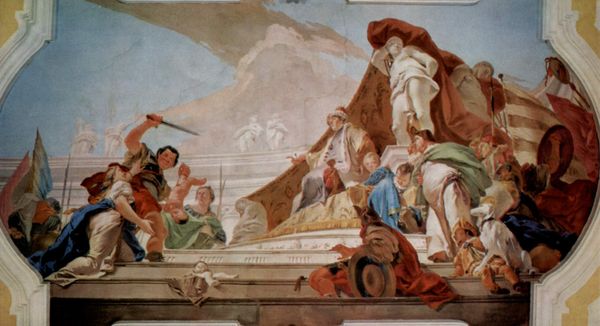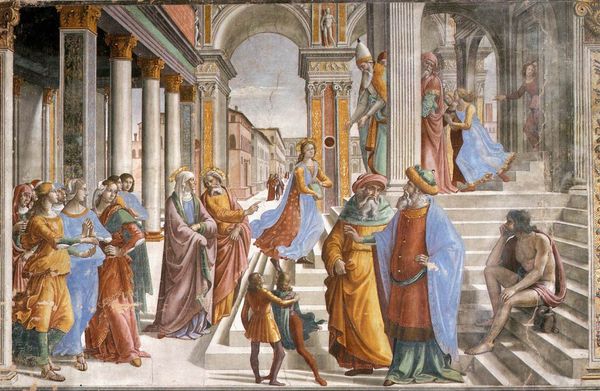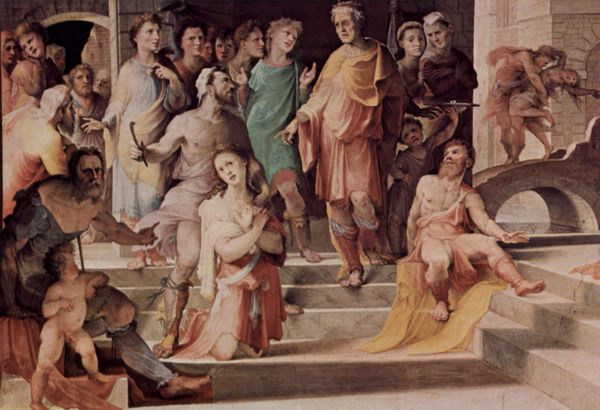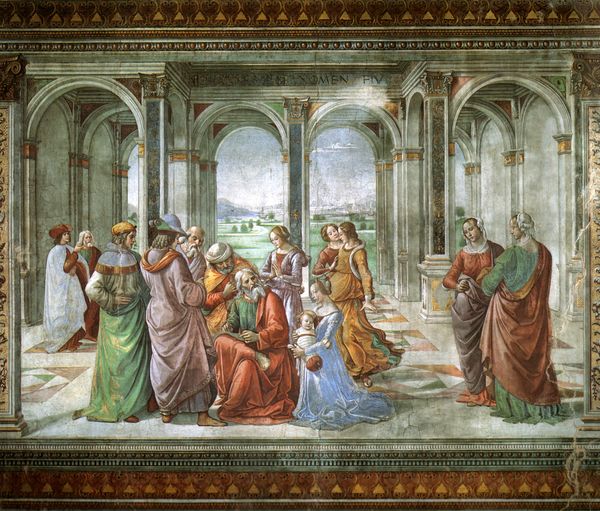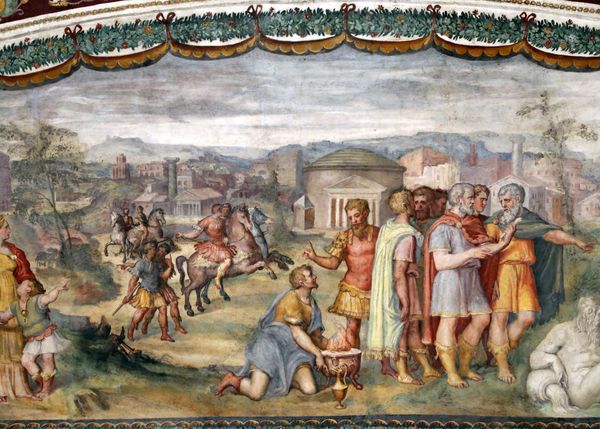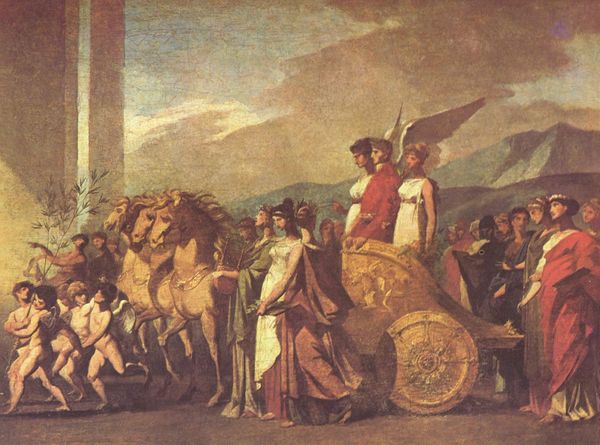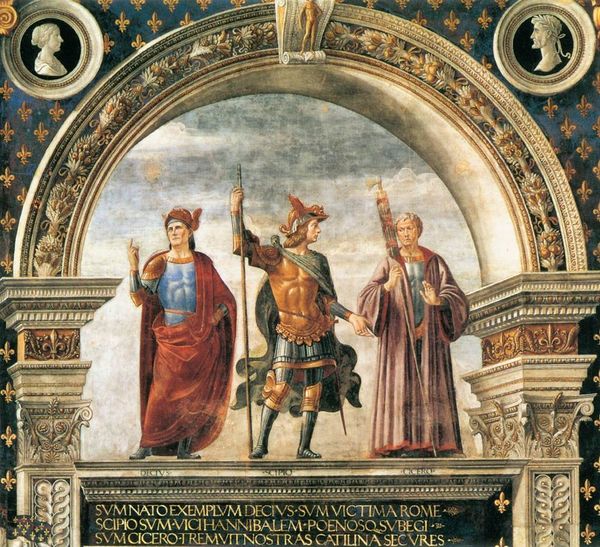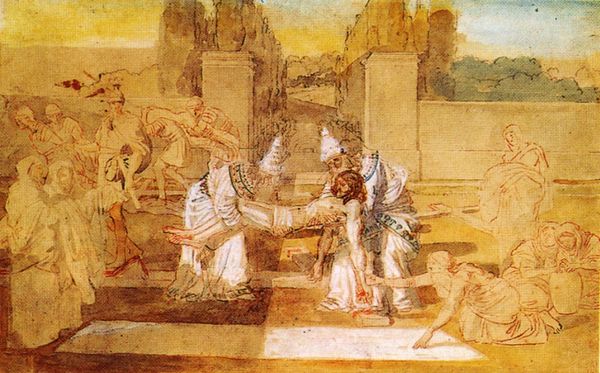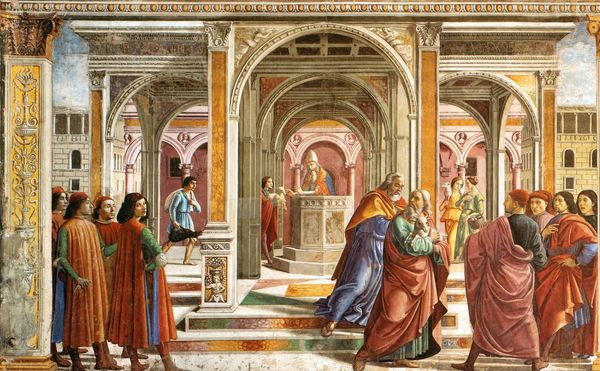
Dimensions: 280 x 300 cm
Copyright: Public domain
Editor: This oil painting, "Eurybates and Talthybios Lead Briseis to Agamemnon" by Giovanni Battista Tiepolo, was completed around 1757. The scene feels very theatrical, almost like a stage production, with the classical architecture framing the figures. What's particularly interesting is the moment being depicted, seemingly full of political tension. What stands out to you in this work? Curator: The “theatrical” feel you observe is key. Tiepolo worked in a period where the grand narratives of history and myth were frequently staged, not just in paintings but in opera and public spectacle. Consider the social function of a work like this. It visually reinforces a certain hierarchy and power structure. Agamemnon’s demand for Briseis triggered Achilles’ wrath, but in Tiepolo’s era it mirrors contemporary political authority and expected subservience. Editor: So, the painting isn’t just telling a story but also commenting on the role of power within a society? Curator: Exactly. Think about the setting—palatial, elevated. The lighting, the costumes… they all contribute to this sense of established order. Do you think Tiepolo is simply glorifying power, or might there be a more subtle critique at play? Perhaps in the vulnerability of Briseis or the imposing, almost caricatured presence of Agamemnon? Editor: I see what you mean. There's a certain uneasiness there, a sense that this "order" is built on something potentially unjust. Perhaps the grand staging makes the story feel removed from the gritty reality of the situation. Curator: Precisely. It reminds us that art is never neutral; it always exists within, and comments upon, a specific historical and social framework. We are now bringing those frames of authority into the light. Editor: This definitely makes me see the painting—and similar historical works—in a new light. It’s not just a beautiful scene; it’s a window into a specific political climate. Curator: And remember that the “political climate” extended all the way from courts into everyday culture, constantly reinforced in paintings and other forms of popular media and storytelling.
Comments
No comments
Be the first to comment and join the conversation on the ultimate creative platform.
